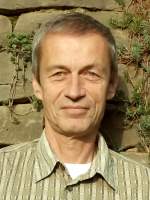- Forum
- categories
- Resource recovery
- Greywater, blackwater or wastewater reuse, irrigation
- An open-access portal to monitor water productivity through remote sensing
An open-access portal to monitor water productivity through remote sensing
9565 views
- Heiner
-

- I am a retired organic farmer and interested in nutrient cycles. As an volunteer I now travel mainly to poor countries and together with locals I would like to find new ways of sustainable agriculture. This is beyond the regulations of IFOAM.
Less- Posts: 80
- Karma: 1
- Likes received: 67
Re: An open-access portal to monitor water productivity through remote sensing
Hi all,
during the last decades this remote sensing thing became very common and is almost known as a tool to prevent the climate change disaster.
To me it is not and if only to a very small extend. As a farmer I grow plants for a period of three months to couple years. And the consumption of water of these plants is very well known (depends a little on varieties). In forestry it is the same with trees. Thats why you find gum trees even in simbabwe. They can stand the bushfire........
We had all this remote sensing data and figures on my last farm (driest part in Germany) and it didn't change much at all. Lots of Ph.Ds. were written but their proposals very often missed the point.
I try to explain:
The weather forecast is good for lets say 5 days (rainfall and evaporation)
The measured water in the soil tells you how long the growing plants will have sufficient water without rainfall. Poor soils under hot conditions storage water for lets say for 15 to 25 days, if not less.
So when you put the seed in the ground nobody has a clue how the season for the plants will be. And you have to wait for the harvest, remote-sensed or not.
So we are swept with big data from all the computers in the world. Usually a farmer of a region can tell by experience what is changing and how. Okay, you can compare this subjective approach with big data and adjust.
In arid and semi-arid regions in the world we know there is a need for irrigation water. The growing cities steal the water out of the ground for their water wasting toilets. So we farmers rely very soon just on wastewater reuse. To me all the research should be done in this field! We don't need a detailed description of a bad situation, we need a cure. Ask the climate change researcher....
The idea to reduce the variety of plants for food to few very drought resistance ones is harmful to our long term survive (biodiversity). But it is favoured by the companies (and their political followers) selling the seeds.
So to me all this remote sensing thing should be used to close the water and nutrient loop. Tracking poison, watching water levels, checking nutrients in the wastewater so the farmer knows what to add. If we can use the wastewater of the cities we can grow more food and trees, increase evaporation, cool the landscape und get more condensation (rainfall).
Hope my intention is to 50% understandable
during the last decades this remote sensing thing became very common and is almost known as a tool to prevent the climate change disaster.
To me it is not and if only to a very small extend. As a farmer I grow plants for a period of three months to couple years. And the consumption of water of these plants is very well known (depends a little on varieties). In forestry it is the same with trees. Thats why you find gum trees even in simbabwe. They can stand the bushfire........
We had all this remote sensing data and figures on my last farm (driest part in Germany) and it didn't change much at all. Lots of Ph.Ds. were written but their proposals very often missed the point.
I try to explain:
The weather forecast is good for lets say 5 days (rainfall and evaporation)
The measured water in the soil tells you how long the growing plants will have sufficient water without rainfall. Poor soils under hot conditions storage water for lets say for 15 to 25 days, if not less.
So when you put the seed in the ground nobody has a clue how the season for the plants will be. And you have to wait for the harvest, remote-sensed or not.
So we are swept with big data from all the computers in the world. Usually a farmer of a region can tell by experience what is changing and how. Okay, you can compare this subjective approach with big data and adjust.
In arid and semi-arid regions in the world we know there is a need for irrigation water. The growing cities steal the water out of the ground for their water wasting toilets. So we farmers rely very soon just on wastewater reuse. To me all the research should be done in this field! We don't need a detailed description of a bad situation, we need a cure. Ask the climate change researcher....
The idea to reduce the variety of plants for food to few very drought resistance ones is harmful to our long term survive (biodiversity). But it is favoured by the companies (and their political followers) selling the seeds.
So to me all this remote sensing thing should be used to close the water and nutrient loop. Tracking poison, watching water levels, checking nutrients in the wastewater so the farmer knows what to add. If we can use the wastewater of the cities we can grow more food and trees, increase evaporation, cool the landscape und get more condensation (rainfall).
Hope my intention is to 50% understandable
Heiner, the old farmer.....
Please Log in to join the conversation.
You need to login to reply- laran86
-
 Topic Author
Topic Author- Project Manager - Nuffic Global Development
Less- Posts: 12
- Likes received: 2
An open-access portal to monitor water productivity through remote sensing
WaPOR, is a FAO open-access portal to monitor water productivity through remote sensing, allows to calculate and distribute key data for monitoring and understanding water use in agriculture. In this way, it provides governments and farmers with reliable information to support decisions and targeted interventions on more efficient use of water: Government agencies use it to monitor the state of their natural resource base and promote their efficient use. Service providers use it to assist farmers in obtaining more reliable yields by monitoring crop health and vegetation trends.
The applications and case studies can help increase water productivity and support governments and farmers to become more resilient to drought.
In this case we can use it to think about the efficient use of water. This therefore means an increased importance of waste water reuse. WaPOR has monitored the water use in the ecosystem and agriculture since 2009. The data appears to be West Asia and North Africa (WANA) also known as (MENA) and Africa.
Take a look here:
wapor.apps.fao.org/home/WAPOR_2/2?lat=32...on=36.10896575522455
www.fao.org/in-action/remote-sensing-for-water-productivity/en
www.fao.org/in-action/remote-sensing-for...por-applications/en/
The applications and case studies can help increase water productivity and support governments and farmers to become more resilient to drought.
In this case we can use it to think about the efficient use of water. This therefore means an increased importance of waste water reuse. WaPOR has monitored the water use in the ecosystem and agriculture since 2009. The data appears to be West Asia and North Africa (WANA) also known as (MENA) and Africa.
Take a look here:
wapor.apps.fao.org/home/WAPOR_2/2?lat=32...on=36.10896575522455
www.fao.org/in-action/remote-sensing-for-water-productivity/en
www.fao.org/in-action/remote-sensing-for...por-applications/en/
An Environmental Scientist, currently managing the EDU-Syria III project for Nuffic in Jordan. Help me prove that the #environmental sector ( #Water, #Energy, #Sanitation, #Waste, #Agriculture) and others can play a vital role in achieving future employment and education for all.
Please Log in to join the conversation.
You need to login to reply
Share this thread:
- Forum
- categories
- Resource recovery
- Greywater, blackwater or wastewater reuse, irrigation
- An open-access portal to monitor water productivity through remote sensing
Recently active users. Who else has been active?
Time to create page: 0.075 seconds







